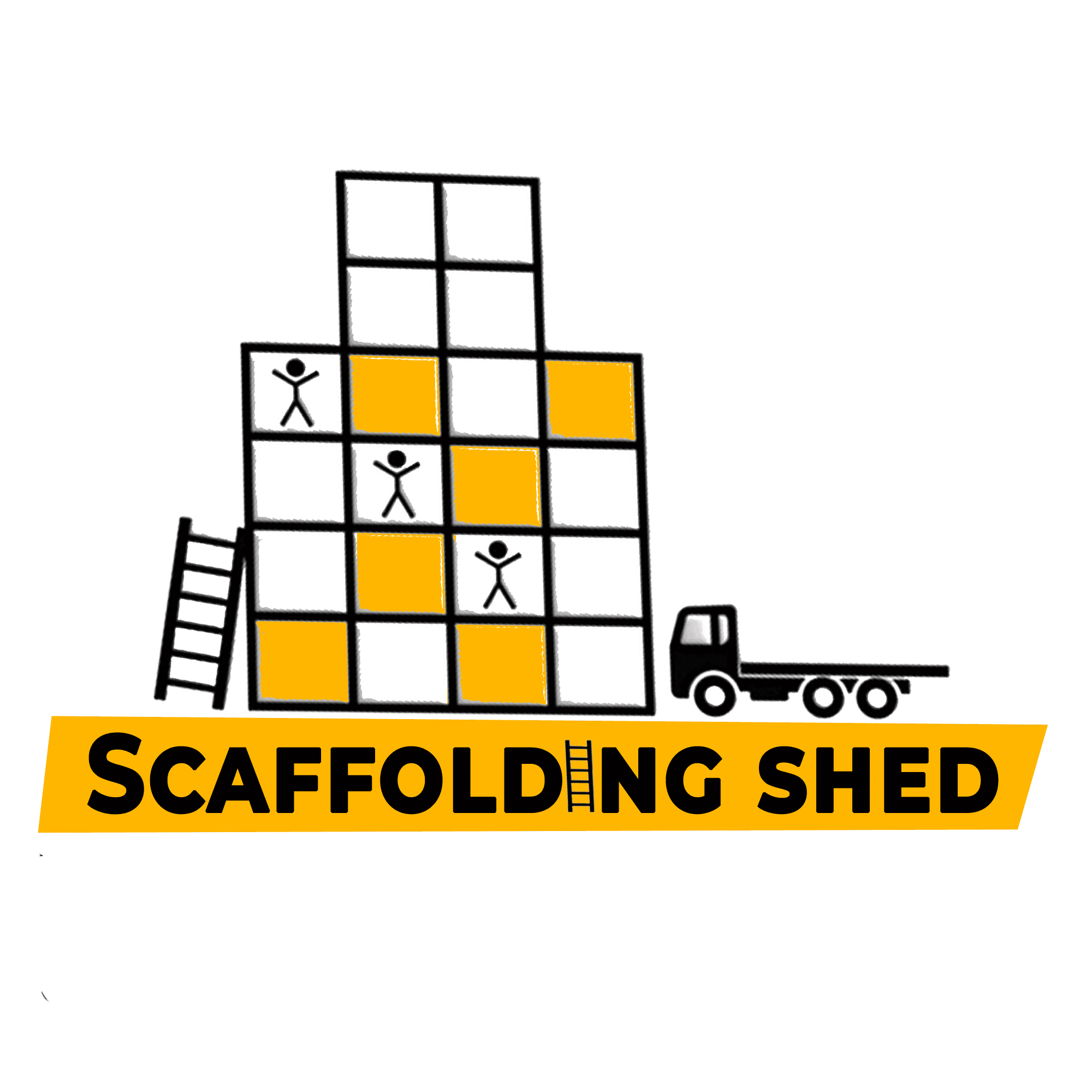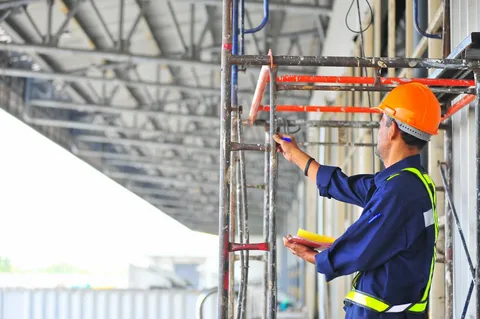Navigating Regulation, Safety, and Innovation in Urban Infrastructure
New York City, with its dense urban fabric and ever-evolving skyline, demands a uniquely complex scaffolding and sidewalk shed ecosystem. From strict façade inspection laws to public safety requirements, scaffolding companies in NYC operate within one of the most regulated and high stakes construction environments in the world. This article explores the structural landscape of the scaffolding industry in New York City through a strategic lens assessing challenges, solutions, business dynamics, and growth opportunities.
Regulatory Pressure and Urban Constraints
The primary driver of demand for scaffolding in NYC is Local Law 11 FISP, which mandates periodic inspection and maintenance of building façades taller than six stories. When deterioration is detected, property owners are required to install sidewalk sheds to protect pedestrians from falling debris. While essential for public safety, these structures often remain in place for extended periods sometimes for years due to delays in repairs or cost-saving tactics.
This has significant economic implications. A 2024 NYC study reported that businesses operating beneath sidewalk sheds can lose between $3,900 and $9,500 per month in revenue, with bars and restaurants among the most affected sectors. Moreover, the aesthetic degradation of urban streetscapes and obstruction of pedestrian flow contribute to broader community dissatisfaction.
Scaffolding providers face additional pressures: complex permit requirements from the NYC Department of Buildings (DOB), absolute liability under New York’s Scaffold Law, and logistical challenges in deploying equipment across a congested cityscape.
Strategic Solutions
To respond to this multifaceted demand, leading scaffolding companies offer comprehensive, end to end services designed to reduce risk and optimize urban project execution.
Core Service Offerings
- Engineering and Structural Design: Custom scaffold configurations adapted to irregular facades, historic buildings, or high rise construction.
- Permit Management: Navigating DOB regulations, sidewalk shed permits, and ongoing inspection compliance.
- Installation and Teardown: Professionally trained crews with proven safety records, capable of rapid deployment and removal.
- Sidewalk Shed Deployment: Protective structures engineered to meet city codes while minimizing visual and physical obstruction.
- Maintenance and Monitoring: Regular inspections, wear-and-tear replacement, and compliance reporting.
- Safety Systems: Integration of netting, hoists, lighting, and barrier systems for worker and pedestrian protection.
Value Differentiators
-
Proven safety record and compliance experience with DOB and OSHA standards.
-
Rapid response capabilities for urgent stabilization and façade risk mitigation.
-
Aesthetic-conscious shed designs that balance protection with minimal business disruption.
-
Emerging use of IoT monitoring, sensor-based structural tracking, and digital permit systems for next-generation efficiency.
Business Model and Revenue Architecture
Scaffolding companies in NYC typically operate through a hybrid model combining equipment rental, labor services, and project consulting.
Primary Revenue Streams
-
Long Term Equipment Leasing: Recurring revenue from rental of scaffold frames, planking, support elements, and safety gear.
-
Installation and Dismantling Services: Labor charges based on project scale and complexity.
-
Engineering and Design Fees: For advanced scaffold configurations or historic restoration projects.
-
Permit and Compliance Services: Billed separately or bundled into full-service contracts.
-
Maintenance Contracts: For long duration scaffolding installations or façade repair timelines.
-
Emergency Services: Premium pricing for urgent deployment or hazard mitigation.
Cost Structure
-
High capital expenditure on inventory and component upkeep.
-
Intensive labor costs, requiring skilled union or certified installers.
-
Insurance and liability premiums elevated due to NYC’s absolute liability framework.
-
Transportation and logistics complexities, especially in congested urban zones.
-
Administrative overhead from regulatory compliance and multi-agency coordination.
Companies that maximize equipment utilization, streamline logistics, and offer turnkey packages are better positioned to protect margins and scale profitably.
Growth Opportunities and Strategic Levers
Despite regulatory hurdles, the NYC scaffolding market presents strong potential for expansion and operational differentiation.
Key Growth Levers
- Geographic Diversification: Extending services into the outer boroughs, Long Island, and the Tri State area.
- Vertical Integration: Offering complementary services in façade restoration, hoisting, and exterior repair.
- Technology Adoption: Integrating digital permitting tools, BIM compatibility, drone-assisted inspections, and sensor-augmented safety systems.
- Design Innovation: Aesthetic upgrades to sidewalk sheds including transparent panels, lighting, and branded finishes to support the city’s push for “beautified” infrastructure.
- Public-Private Partnerships: Collaborating with city agencies on infrastructure renewal, affordable housing developments, and safety initiatives.
- Brand Positioning and Reputation Building: Emphasizing safety culture, reliability, and DOB relationships to become preferred vendors for top developers and GCs.
Challenges and Structural Risks
Success in this industry requires more than operational expertise. Scaffolding providers must navigate a minefield of legal, regulatory, and logistical obstacles.
Major Industry Risks
- Absolute Liability Exposure: New York Scaffold Law holds contractors strictly liable for elevation related accidents, driving up insurance and risk buffers.
- Permit Delays and Bureaucracy: DOB inspections and community board objections can stall project timelines.
- Equipment Downtime: Idle inventory lowers ROI; careful asset scheduling and project forecasting are crucial.
- Urban Delivery Complexities: Transportation, storage, and site access in dense neighborhoods increase operational costs.
- Public Sentiment: Long-standing sidewalk sheds draw increasing scrutiny from city officials and residents, impacting contract renewals.
- Technology Lag: Companies failing to modernize risk falling behind in efficiency, compliance, and competitive edge.
What is the main reason scaffolding is so common in NYC?
Due to Local Law 11, buildings over six stories must undergo periodic façade inspections and repairs, requiring sidewalk sheds for pedestrian safety.
How long can scaffolding remain in place?
Scaffolding can legally remain as long as needed, but delays in repairs often lead to sheds staying up for years.
What permits are required for scaffolding in NYC?
A sidewalk shed permit from the NYC Department of Buildings DOB is mandatory, along with site-specific installation approvals.
What’s the average cost of scaffolding installation in NYC?
Costs vary widely but can range from $60 to $150 per linear foot depending on complexity, location, and duration.
Why is insurance so expensive for scaffolding companies in NYC?
New York Scaffold Law imposes absolute liability for fall related injuries, increasing risk and driving up insurance premiums.
What’s the difference between scaffolding and sidewalk sheds?
Scaffolding provides worker access to building exteriors; sidewalk sheds are protective canopies for pedestrian safety.
How do long term sidewalk sheds affect businesses?
They can block storefront visibility and reduce foot traffic, leading to monthly revenue losses of up to $9,500.
What are the key services offered by NYC scaffolding firms?
Design, engineering, permitting, installation, maintenance, and dismantling often provided as turnkey solutions.
Are there efforts to reduce sidewalk shed durations?
Yes, the city Get Sheds Down initiative aims to streamline facade repairs and shorten the lifespan of sidewalk sheds.
How are companies innovating in this space?
Firms are adopting modular systems, tech based permit management, and even sensors or computer vision for inspection optimization.
Market Outlook
As of mid 2024, NYC had over 9,100 active sidewalk shed permits, representing a persistent and essential segment of the city’s built environment. However, the political and public momentum is shifting toward reducing visual blight and expediting repairs.
Initiatives like the city’s “Get Sheds Down” campaign, new DOB enforcement mechanisms, and possible amendments to Local Law 11 indicate that scaffolding companies must become more agile and proactive. Additionally, emerging research leveraging computer vision and urban data analytics such as identifying unpermitted or expired scaffolds via dashcam footage — reflects an increasing fusion of urban tech with traditional construction operations.
The future belongs to scaffolding firms that blend technical mastery, regulatory fluency, and design sensitivity all while embracing smart city integration and delivering measurable value to developers, property owners, and the urban public.



